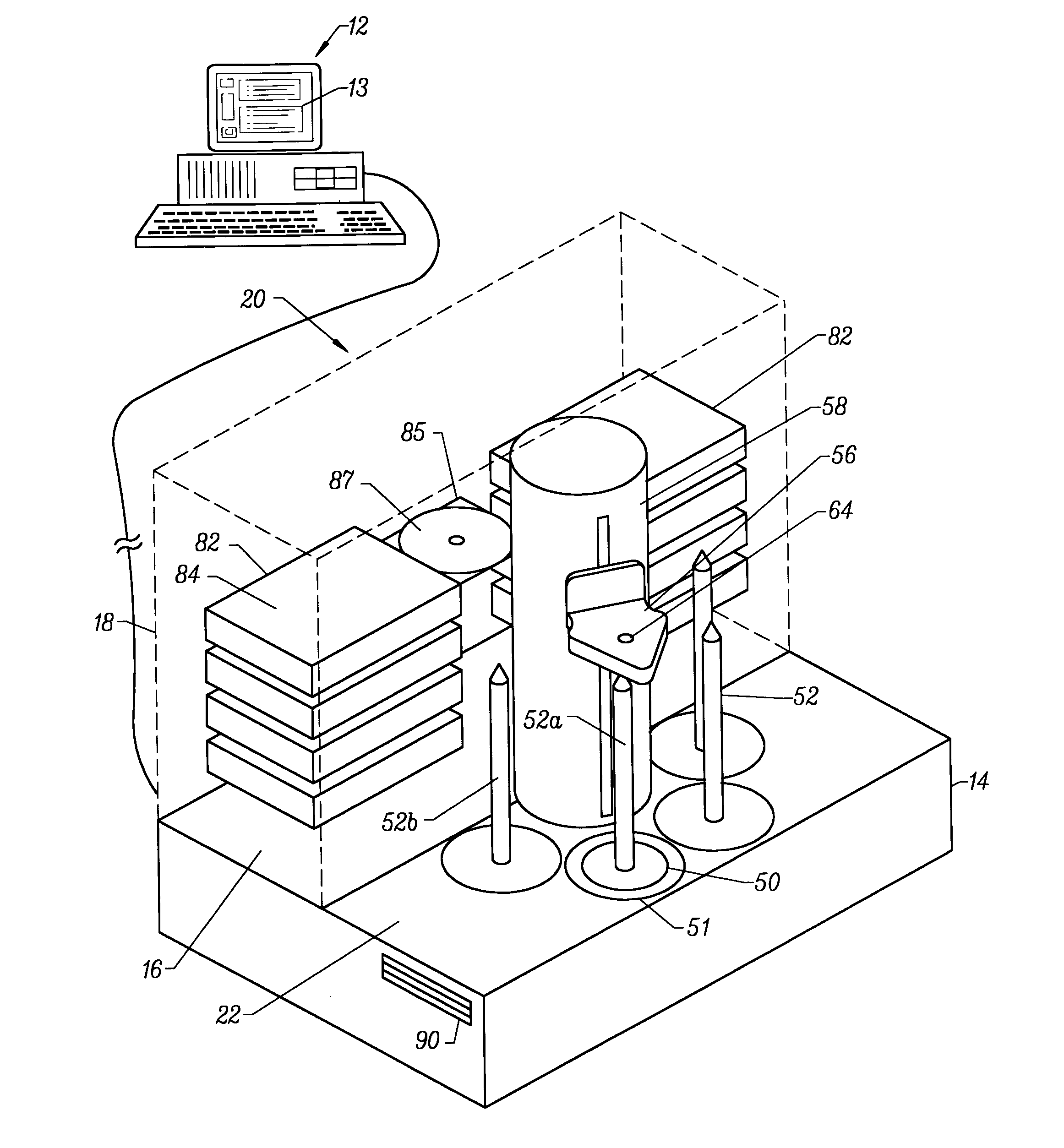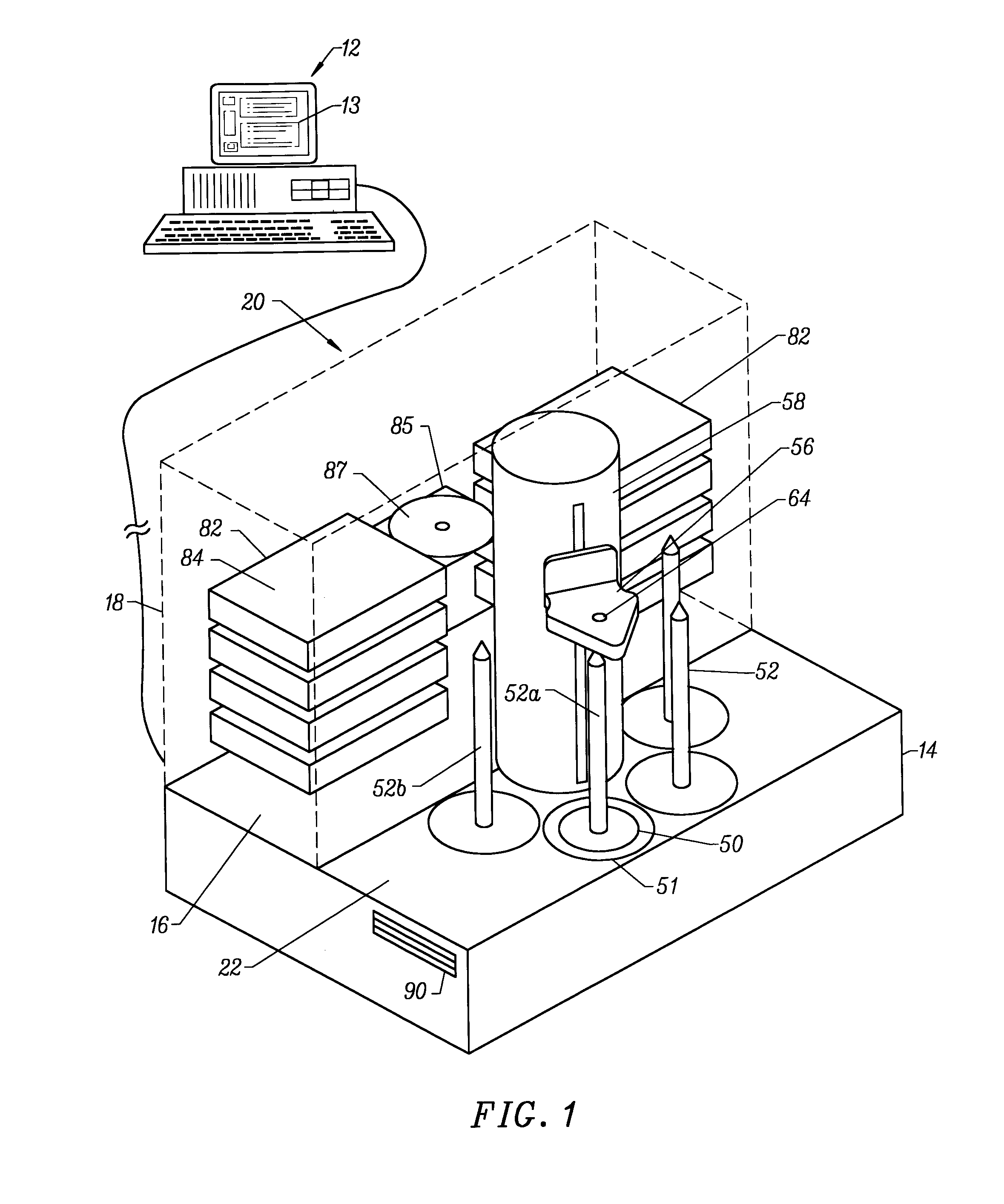Programmable self-operating compact disk duplication system
a compact disk and self-operating technology, applied in the direction of data recording, instruments, recording head arrangements, etc., can solve the problems of preventing cd-r users from achieving maximum efficiency in the copy process, unable to reap the benefits of this technology, and unable to transfer data onto compact digital disks. , to achieve the effect of reducing cd-r disk read or write errors
- Summary
- Abstract
- Description
- Claims
- Application Information
AI Technical Summary
Benefits of technology
Problems solved by technology
Method used
Image
Examples
Embodiment Construction
[0056]Referring to FIG. 1, the programmable automatic compact disk duplication system of this invention is designated generally by the reference numeral 10. The duplication system 10 includes a host computer 12, shown schematically, connected to a copy unit 20. The host computer 12 comprises a programmable computer that includes computer software for providing a user interface for operating the copying process of the copy unit 20. It is to be understood that the host computer may be incorporated into the copy unit 20 with the copy unit having a keyboard or other input device such as a control panel for managing the operation of the copy unit 20.
[0057]As shown in FIG. 2, the copy unit 20 includes an internal microprocessor 24 that is electrically connected to the host computer 12 for controlling the electromechanical operations of the copy unit 20. The copy unit 20 is constructed with a housing 14 having a deck 16 housing the electronics and drive assemblies, and a cabinet 18 housing...
PUM
 Login to View More
Login to View More Abstract
Description
Claims
Application Information
 Login to View More
Login to View More - R&D
- Intellectual Property
- Life Sciences
- Materials
- Tech Scout
- Unparalleled Data Quality
- Higher Quality Content
- 60% Fewer Hallucinations
Browse by: Latest US Patents, China's latest patents, Technical Efficacy Thesaurus, Application Domain, Technology Topic, Popular Technical Reports.
© 2025 PatSnap. All rights reserved.Legal|Privacy policy|Modern Slavery Act Transparency Statement|Sitemap|About US| Contact US: help@patsnap.com



